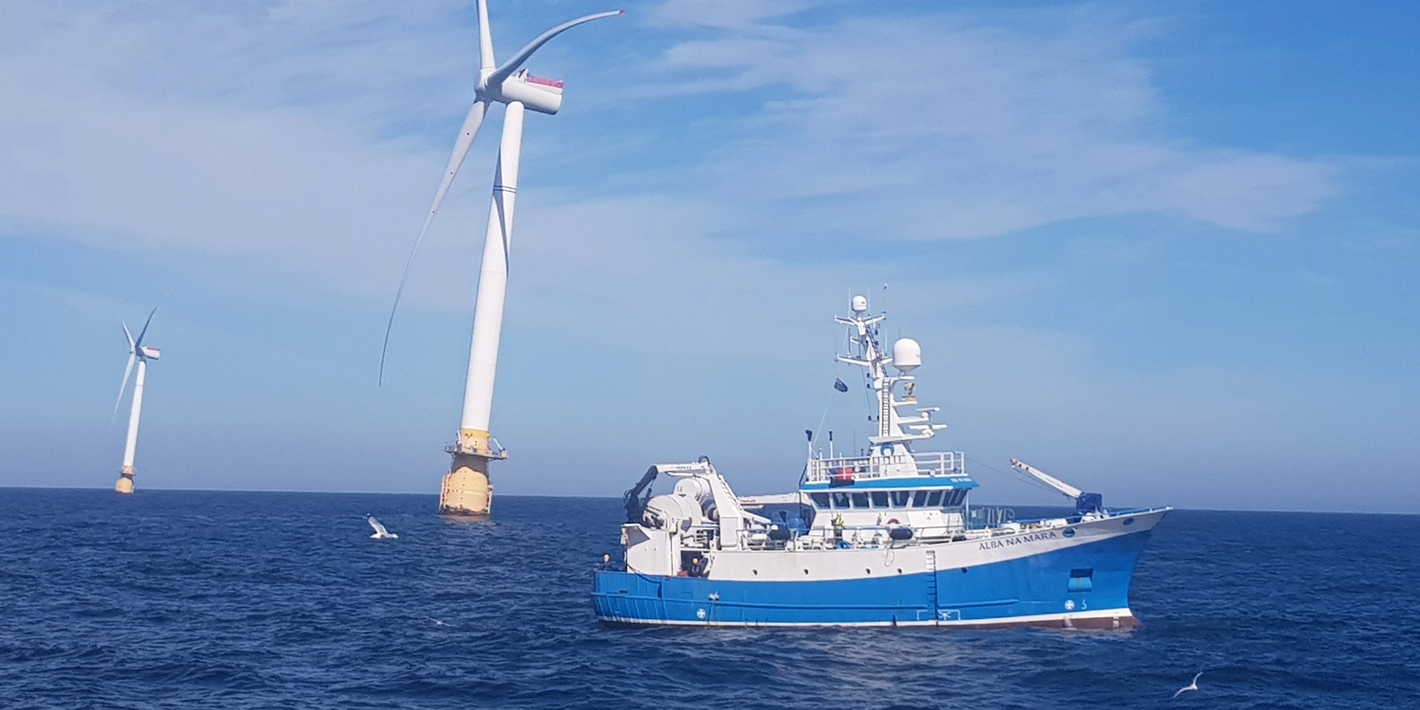Equinor and Marine Scotland collaborate to trial safe fishing within floating wind farms

Equinor, operator of Hywind Scotland, is collaborating with Scottish Government Directorate Marine Scotland to better understand how fishers can safely operate around and within floating offshore wind farms.
Monica Fundingsland, Sustainability Advisor at Equinor said: “Floating turbines are anchored to the seabed via dynamic mooring chains. Vessel data has shown that fishers are avoiding our floating offshore wind farm, so we are working closely with Marine Scotland to better understand how fishers can safely fish within a floating wind farm using a variety of techniques.”
Using floating turbines means that wind farms can be built in deeper waters, either further out to sea where wind speeds are more consistent, or around coastal areas too deep for fixed bottom foundations.
Hywind Scotland is the world’s first floating offshore wind farm and began producing electricity in 2017. Since then it has consistently outperformed other UK wind farms, achieving the highest annual average capacity factor (how much electricity is actually generated as a percentage of what the wind farm would generate if at full power all the time) in the UK since operations started.
As the first of its kind Equinor is capturing as much data from the floating wind farm as possible to further apply and share this knowledge globally around floating offshore wind.
In a survey scheduled at Hywind Scotland for 2022, Marine Scotland will test three kinds of fishing gear; creels, fishtraps and jigging lines.
Whilst not all of these fishing methods are used commercially around Hywind Scotland itself, the purpose is to demonstrate how methods used globally can interact with floating offshore wind farms.
Earlier in June, a trial survey allowed Marine Scotland to test some of the equipment, in preparation for next year’s survey.
Dr Jared Wilson, Renewables and Energy Programme Manager within Marine Scotland, the Scottish Government Directorate responsible for the integrated and sustainable management of Scotland’s seas said: “As home to the world’s first floating offshore wind farm we are very keen to leverage this position to understand more about how fishers can continue to work safely alongside offshore wind. The results and lessons learned from this initial two day trial will help us inform the approach taken for the larger trial next year.”
Equinor’s Monica Fundingsland continued; “We have seen rapid growth in fixed bottom offshore wind, and expect now to see a similar path for floating offshore wind as new markets are opening up. Safety is always our number one priority and as the leading developer in floating offshore wind, we are using our assets and expertise to understand how fishing can continue safely within the wind farm zones. We would like to build on these initial trials by trialling more fishing techniques in future.”
The full survey is expected to take place over Q2-3 2022.